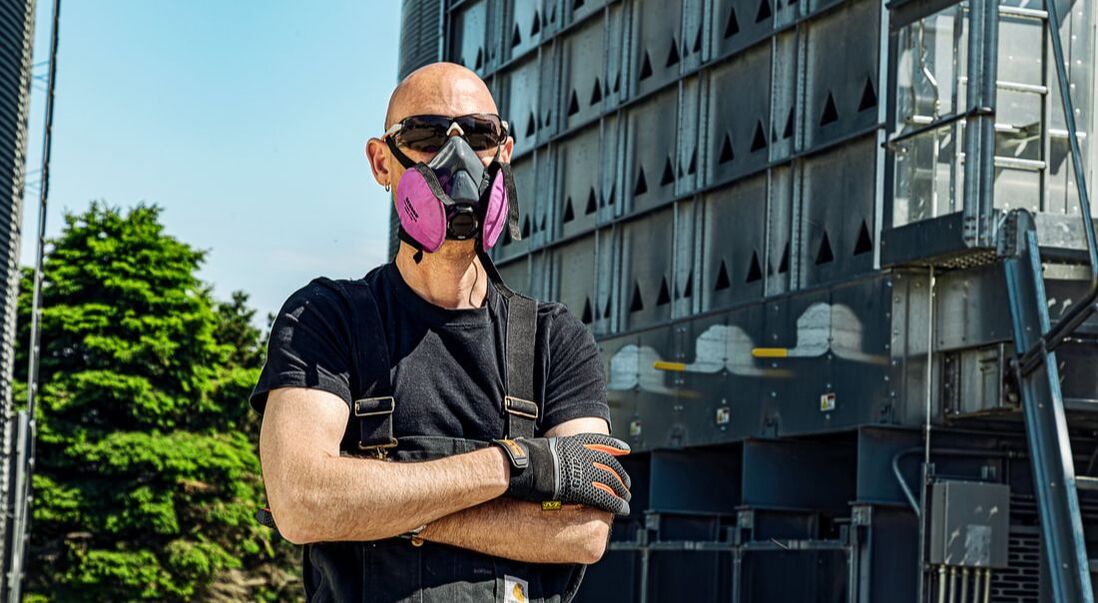21 questions to make sure you have the correct respiratory protection
|
A complete and compliant respiratory protection program is more than just writing down procedures for employees who are required to wear a respirator on the job.
You must make sure your employees are physically able to wear a respirator, select the correct respirator for your application, and be sure the equipment properly fits your employees. Use this guide to help you understand the different parts of a respiratory protection program. Make sure your workplace has accounted for each of these to keep your workers safe and avoid costly fines. Know your hazards The first step to developing an OSHA compliant program is identifying and evaluating the respiratory hazards in your specific workplace. 1. Do you know the type and physical form of the hazard(s) present? 2. Are sufficient engineering or administrative controls in place to control hazardous atmospheres? 3. Have you accounted for known and foreseeable emergencies? 4. Does the atmosphere contain sufficient oxygen? Written respiratory protection plan Supplying your employees with respirators is not enough to stay OSHA compliant. You must develop, implement and periodically evaluate a written respiratory protection program that is specific to your workplace and the hazards present. 5. Do you have procedures for selecting respirators, medical evaluations and fit testing? 6. Does your written plan account for employees wearing respirators voluntarily? 7. Do you have a designated program administrator qualified to administer the program? Respirator selection Respirator selection must be based on the hazard(s) to which your employees are exposed. Remember to select a variety of models and styles so your employees can find a respirator that fits them the best. 8. Are all of the respirators you selected NIOSH-certified? 9. Have you selected respirators that are based on OSHA’s Assigned Protection Factors and Maximum Use Concentrations? 10. If applicable, are the respirators you selected approved for Immediately Dangerous to Life or Health (IDLH) atmospheres? Medical evaluations Respirators can make breathing more difficult and may place additional stress on the bodies of workers assigned to wear them. Because of this, before they are required to wear a respirator, employees must be medically approved to do so. 11. Have all employees required to wear a respirator been medically evaluated before wearing a respirator for the first time? 12. Did you have a physician or other licensed healthcare professional conduct the medical evaluations? 13. Was the OSHA-approved medical evaluation completed? Respirator fit testing Fit testing must be conducted before any employee wears a respirator with a tight-fitting facepiece. This is very important because if the respirator does not fit properly it will not offer the full level of protection against contaminants. 14. Have all employees had a medical evaluation before fit testing? 15. Have all employees been fit-tested before wearing respirators with tight-fitting facepieces? 16. Are fit tests being conducted annually? 17. Have fit tests been administered using OSHA accepted QNFT or QLFT protocols? Training and plan evaluation Employee training is critical for a successful respiratory protection program. Employees must be trained on respirator use before they are required to wear a respirator on the job and also on an annual basis. 18. Is your training understandable to your employees? 19. Have all employees been trained prior to their first use of a respirator? 20. Does your training cover all topics required by OSHA? 21. Do you have a schedule for re-training employees and understand when re-training is necessary? Fastenal safety specialists Still unsure if your respiratory protection program is compliant with relevant standards? Contact our safety specialists for help today by emailing [email protected] or calling 833-365-7233.
Vertical Divider
|
The Right Levels
All environments with less than 19.5% oxygen are considered oxygen deficient. Double Impact Keep respiratory protection clean and well-maintained to save money and protect employees. Like what you're seeing here? Subscribe to the Blue Print for FREE and get the magazine sent right to your address.
|


